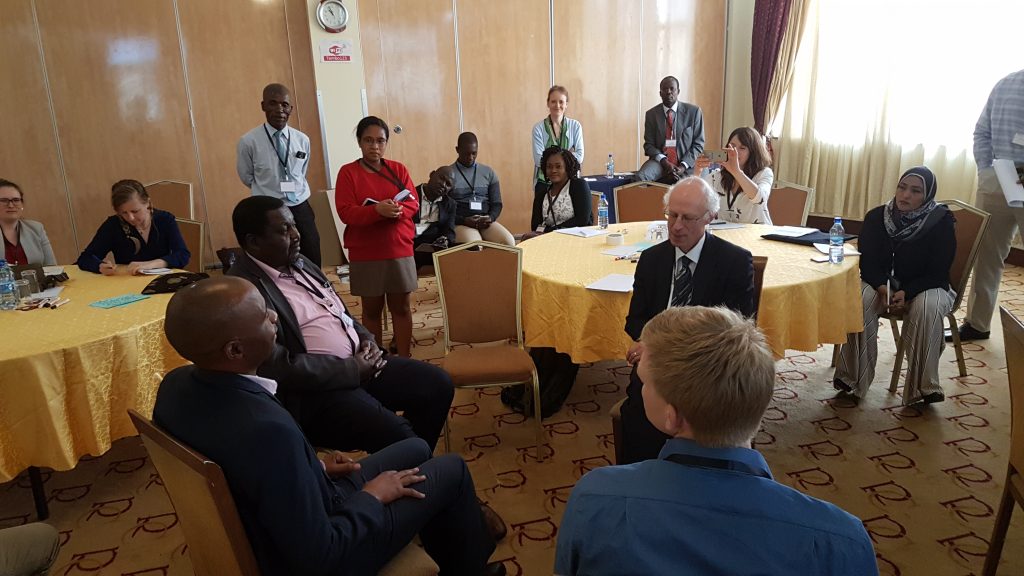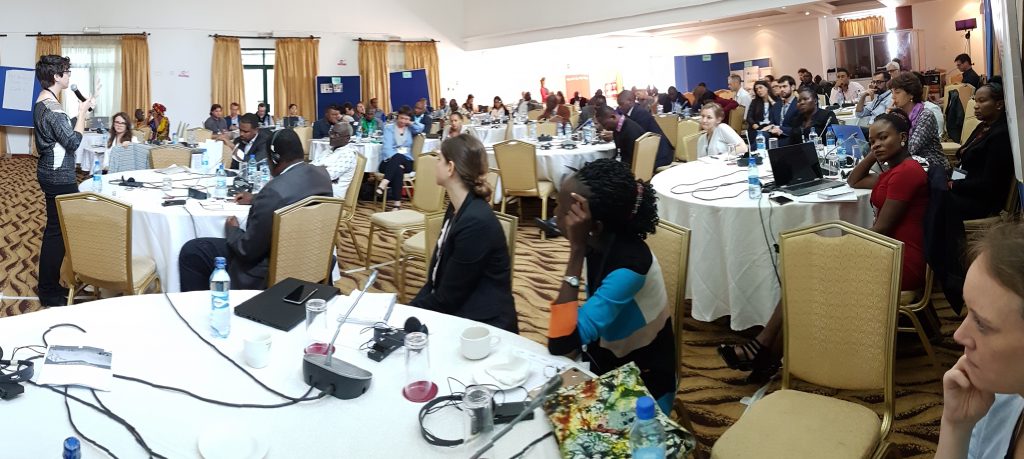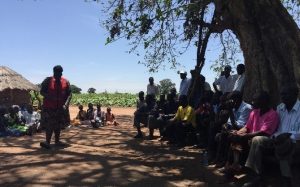Project Management
Liz joined the first meeting of the SHEAR Studentship Cohort at Imperial College London on April 26th. There are some interesting PhD projects that are now underway that will be working on FATHUM-related topics, for example flood forecasting in Kenya, citizen science for early warning systems and visualisation of forecasts. There will be a SHEAR studentship conference in September which Early Career Scientists from across the 4 main SHEAR consortia will be invited.
Liz has also collated all of the abstracts for the Adaptation Futures session on Forecast-based Financing and sent them all to the organising committee. The session will last 1hr45 minutes. There will be a short (5 minute) introduction to FbF for those in the audience who are not familiar in it. Then the rest of the session will be split into two. The first half will showcase FbF case studies, the second half FbF thematic topics. There are 5/6 abstracts in each section, and so there will be 5/6 groups rotating around the room. You will therefore have 8 minutes with each group. I would suggest preparing a flexible presentation – be prepared to speak for up to 8 minutes if there are no questions, but ideally audience members will interject or ask questions and direct the flow of conversation. That way the audience members become an active part of your presentation and research, rather than it being a passive listening exercise.
Project management activities this month have also included arrangements for the meeting in South Africa in June. Joy’s efforts have been indispensable, thanks Joy!
Work Package 1
Flood seasonality and ENSO/IOD teleconnections:
Andrea has been focusing on the changes of seasonality of flooding in Sub-Saharan Africa with ENSO and Indian Ocean Dipole. He has calculated some circular statistics based on the streamflow reanalysis data-set (GloFAS driven by Era-Interim/Land), in order to identify the flood timing for different ENSO/IOD conditions. These statistics have been mapped over Africa and show significant changes of seasonality in some regions of Eastern and Southern Africa.
Andrew led a joint FATHUM/ForPAC team Skype discussion (19 April):
Participants: Erin Coughlan de Perez, Arlindo Meque, Liz Stephens, and Andrea Ficchì, from FATHUM (WP1); Martin Todd, Dave MacLeod, Maurine Ambani, Mary Kilavi and Augustine Kiptum from ForPAC.
We have discussed about the seasonality analysis and the impact of ENSO/IOD on flooding likelihood changes (EGU presentation). Some of the valuable comments and suggestions received from the team concern:
- The need for an uncertainty assessment of the reliability of forecasts of flooding with ENSO/IOD.
- The possible inclusion of the Subtropical Indian Ocean Dipole in the analyses, because of its expected influence on rainfall in Southern Africa;
- The interest of deeper investigations on particular case studies, such as the Shabelle River (Somalia). The results of flood likelihood changes with ENSO/IOD for this river are relevant for decision-making. Results, so far, highlight some distinct predictions for the region, contrasting some current Early-Action policies for El-Niño preparedness.
EGU presentation (11 April): Liz presented Andrea’s work at the European Geophysical Union conference, including recent results on the reliability of the statistical forecasts of flooding likelihood based on ENSO/IOD teleconnections. This part highlighted some interesting differences between the reliability of predictions based on either ENSO or IOD. The feedback from the talk was good, in particular there were requests to do the same analysis for drought hazard.
Work Package 2
For Uganda:
They are continuing with their desktop review, including a review of past flood events in Teso (from 2007) and review of sociodemographic info for Amuria and Katakwi districts. They are trying to set up an interview with their disaster risk contact person at OPM.
For South Africa:
Busy mostly with admin and logistics for the upcoming June meeting. Setting up and conducting interviews with key stakeholders in our field site – this process also critical for finalising the fieldtrip plan for June, and selecting at-risk communities (in the towns and farming communities) for household-level interviews. Ongoing desktop review of past flood events in the Langeberg and collecting reports/historical info on the case study area.
For Mozambique:
- Evaluation of flood triggers;
- Desktop review: data collection on past floods in Chibuto region (initiated);
- Study of the contribution of Limpopo Basin human formations to the flood warning system
- Desktop review: DRM/EWS legislation (initiated).
Work Package 3
Currently Sara is transcribing the recordings from both Dialogue Platforms (Berlin, October 2017 & Nairobi, March 2018), analysing interviews and refining the interview protocol. This preliminary research data forms the basis for the observational analysis document that Sara is currently also drafting. In order to analyse the conferences and interviews, Sara is developing a coding system that enables her to distil dominant themes and understand plural perceptions.
Furthermore, Sara has been reading and summarizing international reports and reviews of existing early action/ and cash transfer projects and literature on the use of probabilistic forecasts in decision-making.
Sara is also actively approaching potential interviewees to follow up on some of the talks that I had during the Dialogue Platform in Nairobi. In particular Sara is keen to interview more people on the periphery of the FbF community, please let her know any suggestions you might have.
Work Package 4
Tobias is due to begin at Reading University at the beginning of June, and will be attending the meeting in South Africa.
Topics for discussion on May 3rd
- Question on progress: does anybody have any comments or questions about the progress updates?
- Does everyone understand the format and what they need to prepare for the Adaptation Futures FbF session?
- Question on June meeting: what needs to be discussed in Stellenbosch in June?
Joy comments: I think that the first half of the first day should be work package presentations and updates on their progress – so everyone knows what everyone else is doing. The morning of Day 2 should involve each work package breaking into separate groups to plan/discuss their work and plans for the upcoming months (while we are fresh and full of ideas!). Those are two ‘sessions’ that I think are critical.
- Open question: What are the challenges of setting up FbF for transboundary rivers?






















